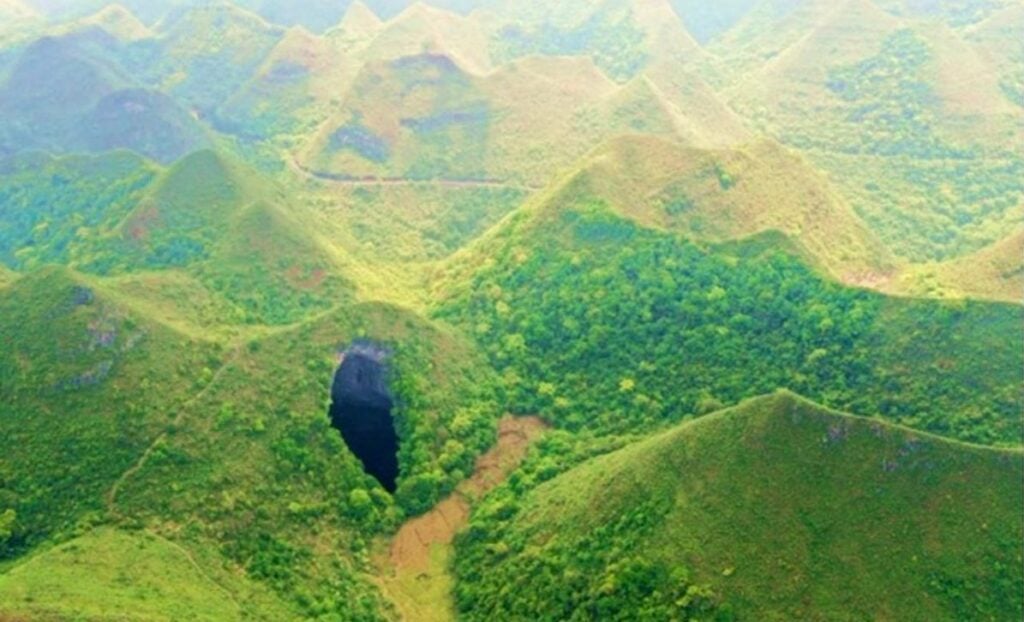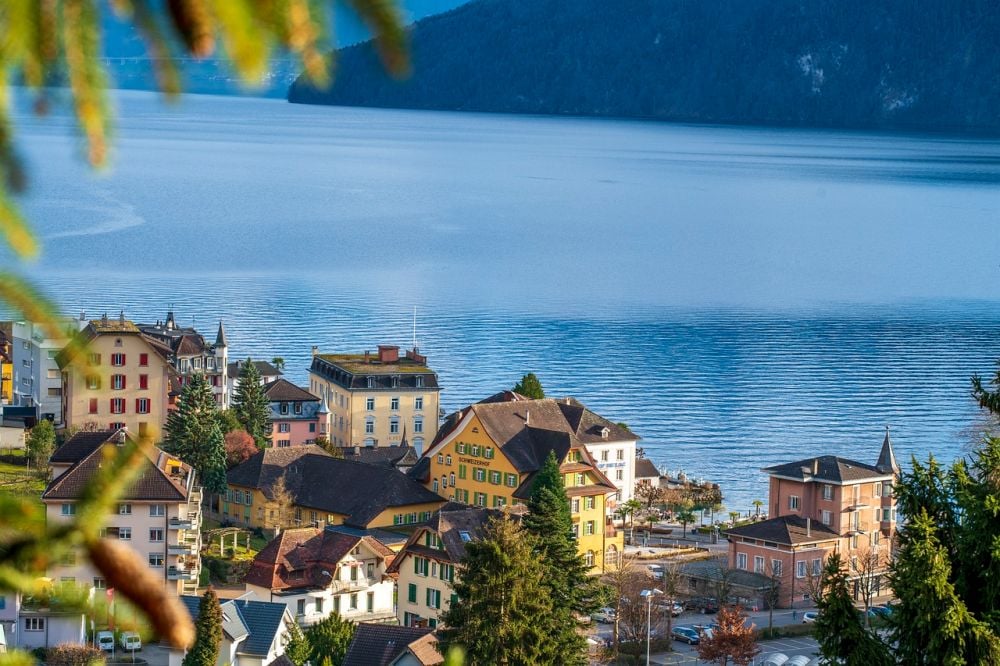Scientists Discover Ancient ‘Lost World’ Hidden in Giant Chinese Sinkhole
In a discovery that sounds like something out of an adventure novel, Chinese researchers have found a gigantic and mysterious sinkhole that may contain clues to our planet’s prehistoric past. This newly unearthed “lost world” lies in proximity to Ping’e village, Leye district of Guangxi, southern China and provides a precious peek into the pristine ecosystem, which has probably been left untouched for thousands, and even millions of years.

The giant sinkhole, or karst depression, is 192 meters (630 feet) deep, 306 meters long, and 150 meters wide. At the base is a lush, old forest with trees 40 meters (approximately 130 feet) tall toward the opening of the sink hole, where they struggle for the precious sunlight that seeps through. Scientists believe that because of isolation, very unique species of flora and especially fauna in this sinkhole have remained undisturbed, and this may be a completely new world to science.
“There are species in this cave that have never been reported or described,” said Chen Lixin, leader of the expedition.
The cavern discovery is an extension of a much wider exploration effort by Chinese researchers specialising in karst geology – a discipline that studies landforms carved out by the erosion of soluble rocks, like limestone, dolomite, and gypsum. These landscapes usually contain sinkholes, subterranean drainage, caves, and are renowned globally in the Guangxi province due to their imposing limestone cliffs and underground wonders.
In China, such sinkholes are poetically called “tiankeng”, which literally translates into “heavenly pits” because of the enormity of their size and the breathtaking views they offer. What makes this specific sinkhole stand out, though, isn’t what’s on the surface, but what lies beneath — an ecosystem so isolated and pristine that it’s been described as a “biological time capsule”.
A Glimpse into Earth’s Past
It is thought that vegetation in the forest at the sinkhole’s bottom has the potential to be millions of years old, having developed in the shade of this protected area. This has generated excitement in the international scientific community, and in the botanists and evolutionary biologists who also hope that the discovery may throw some light on Earth’s climatic and ecological history.

Zhang Yuanhai, a senior engineer of the Karst Institute of Geology, said his first excursion into the cavern below the bottom of the sinkhole was like stepping into “another world. The environment, free from urbanisation or agriculture, offers a rare scientific opportunity to explore biodiversity in pristine conditions.
Ecological and Environmental Significance
Implications are far from mere scientific interest. China has fought desertification for years in its arid and semi-arid areas through tree planting—an intervention, however, that has sometimes flopped because other than trees and shrubs, non-native or water-intensive plant species are introduced. Therefore, these newly discovered species of plants could offer renewed hopes.
Resilient water-efficient plant species found in this ecosystem may form the basis for more sustainable reforestation efforts. By learning from the way in which such plants have evolved to flourish in light-poor, nutrient-poor settings, scientists may create more effective strategies for ecological restoration.
What Comes Next?
Although the first results are exciting, the scientists stress how the main work is just starting. Thorough biological surveys and DNA sequencing, and environmental research are now being carried out to identify and explain what is kept from view by the sinkhole. World scientists are also been interested in participating in future expeditions to work together on identifying and conserving species.
This discovery is a great reminder of how much of our planet remains undiscovered, even in our satellite images and globe mapping era. Under our feet, whole worlds could still be waiting to be discovered.
While scientists delve farther into this “lost world,” this sinkhole in Guangxi may well become one of the most important ecological finds of the decade, not just new species, but new hope for earthly conservation and learning about our planet’s forgotten biological past.






